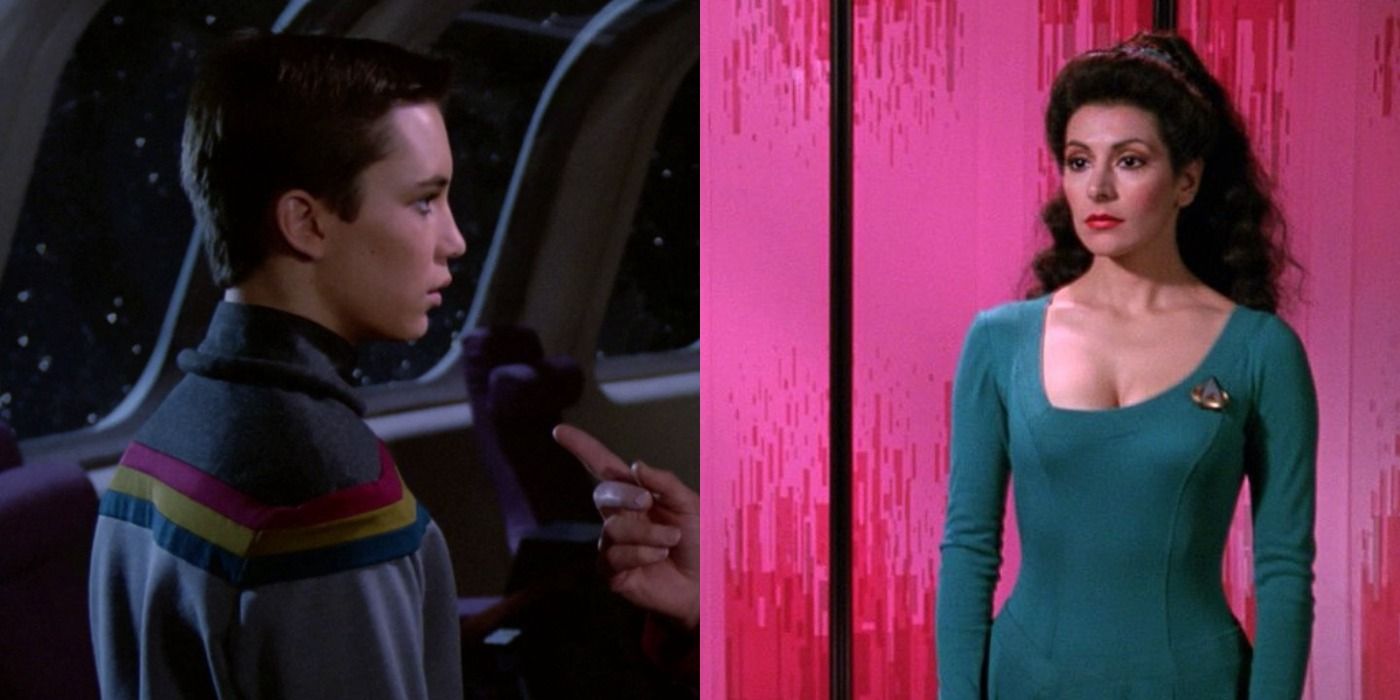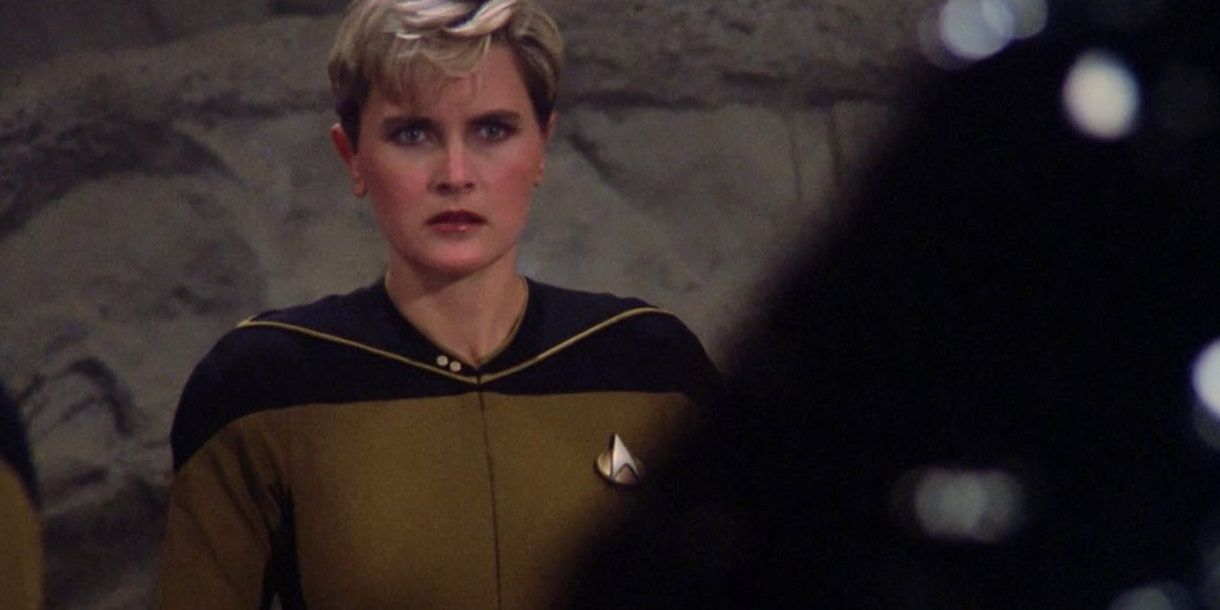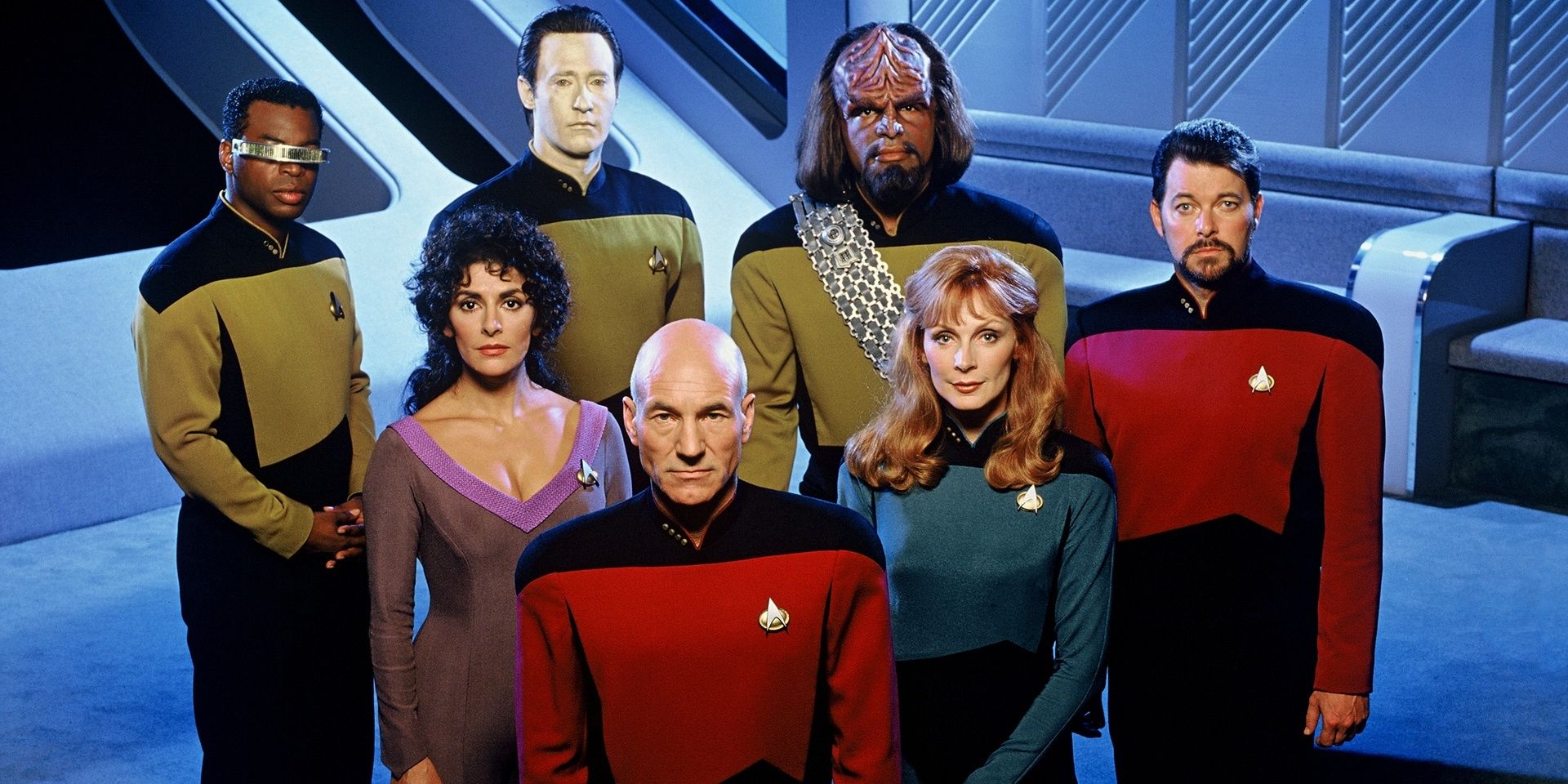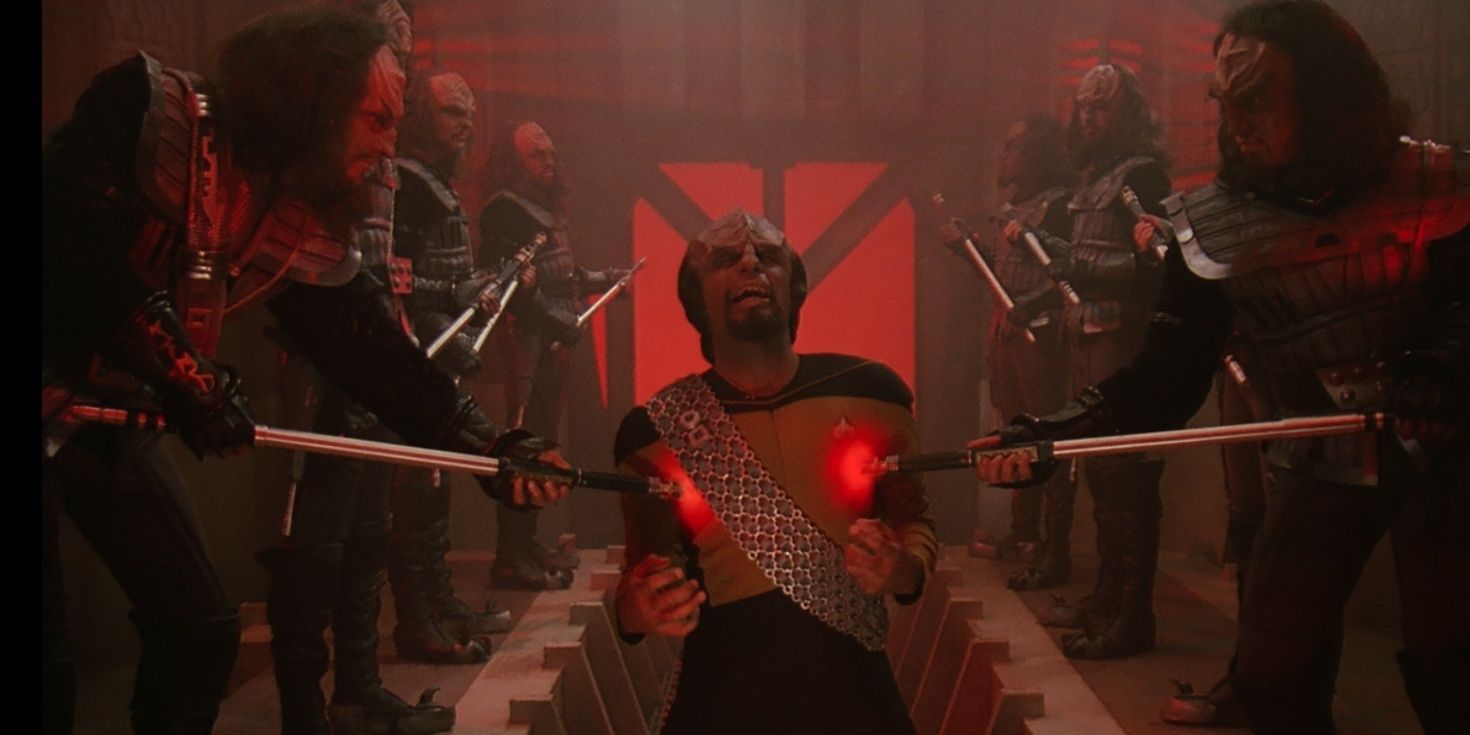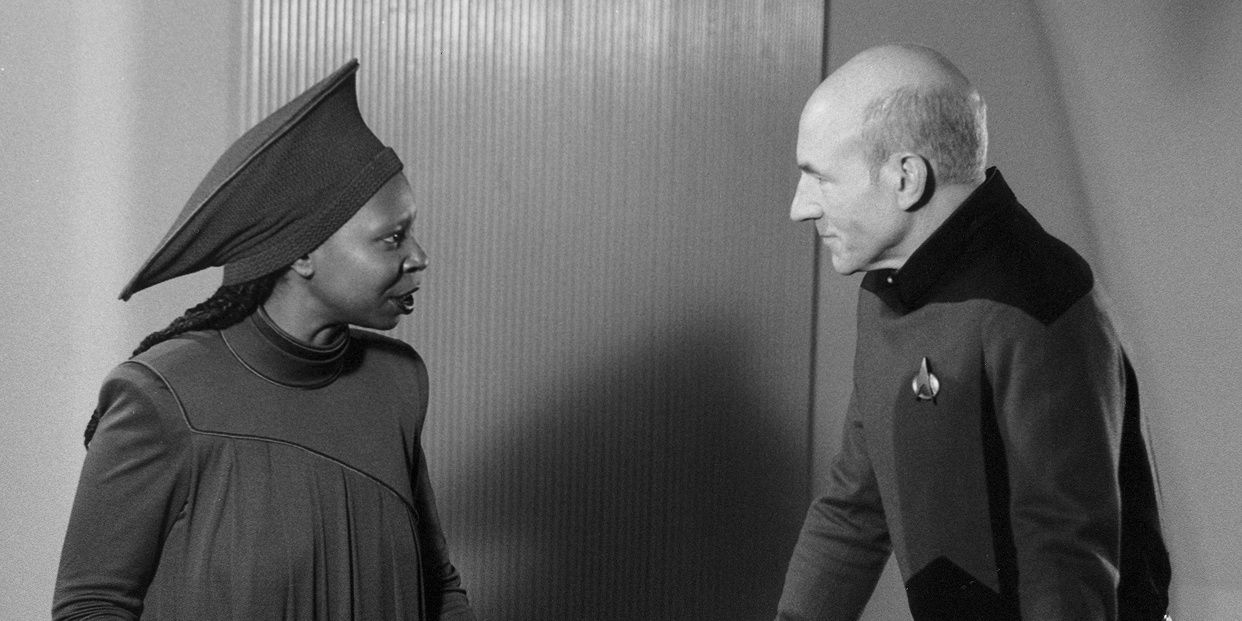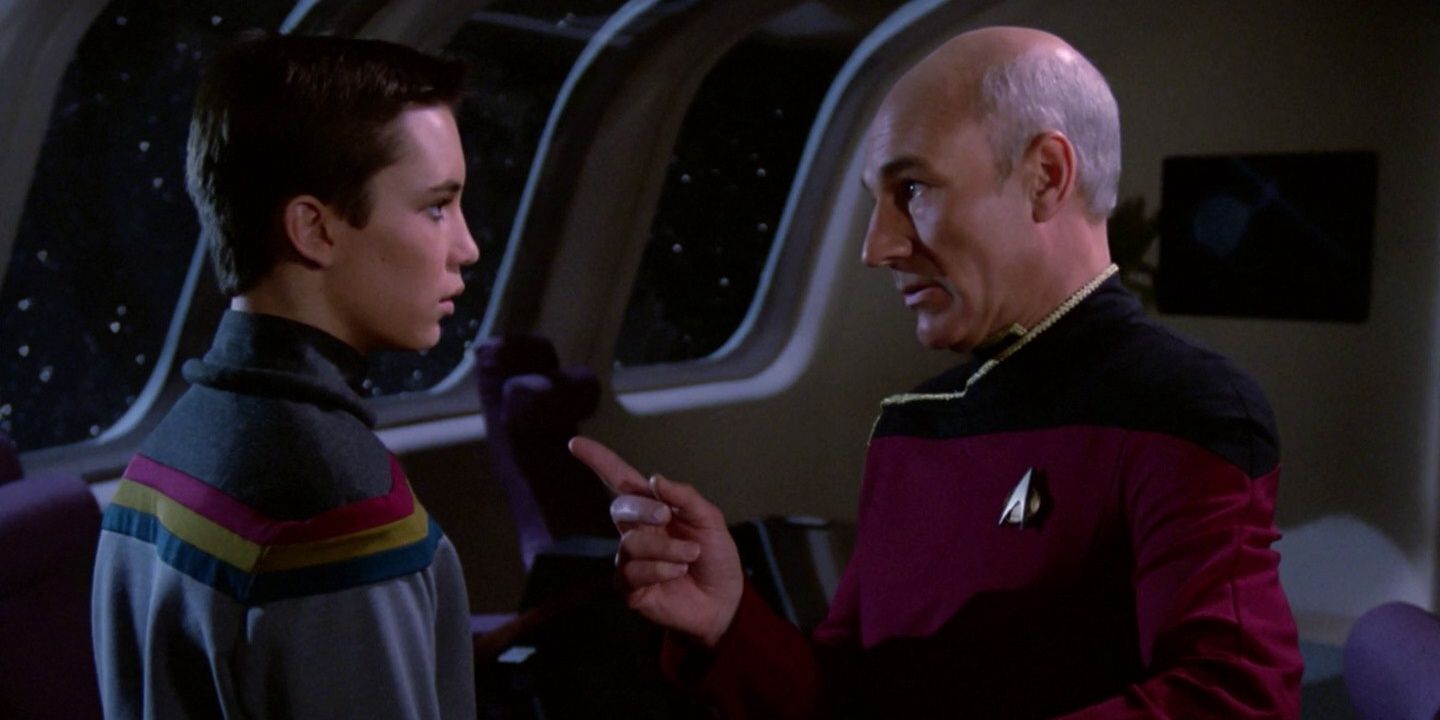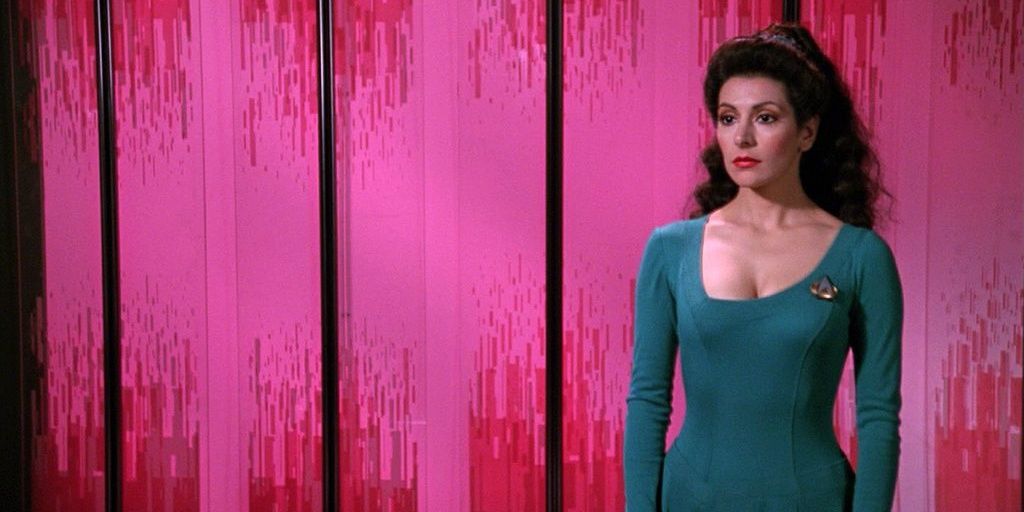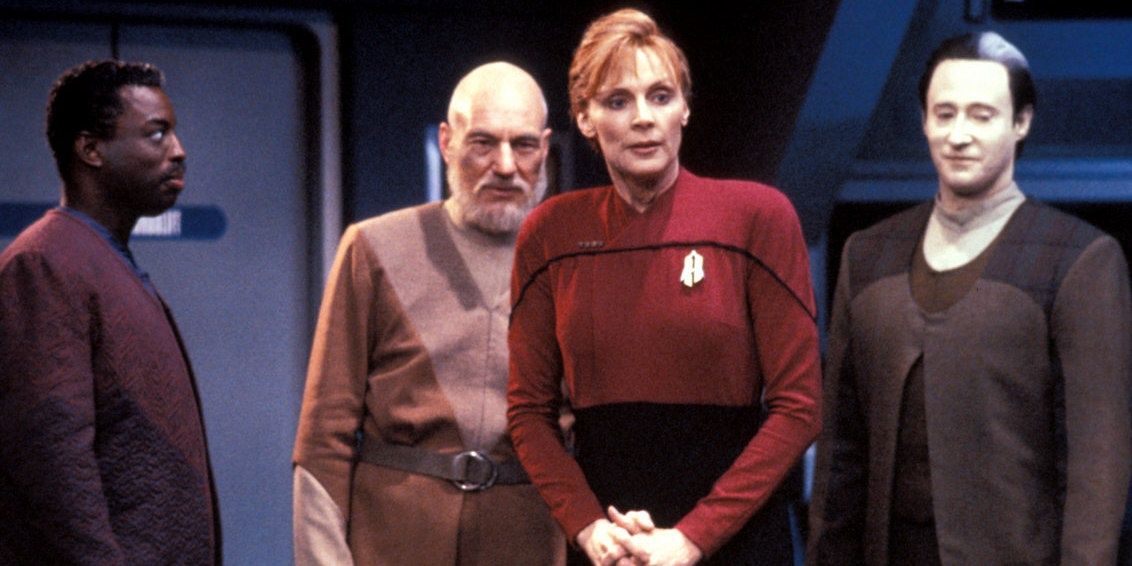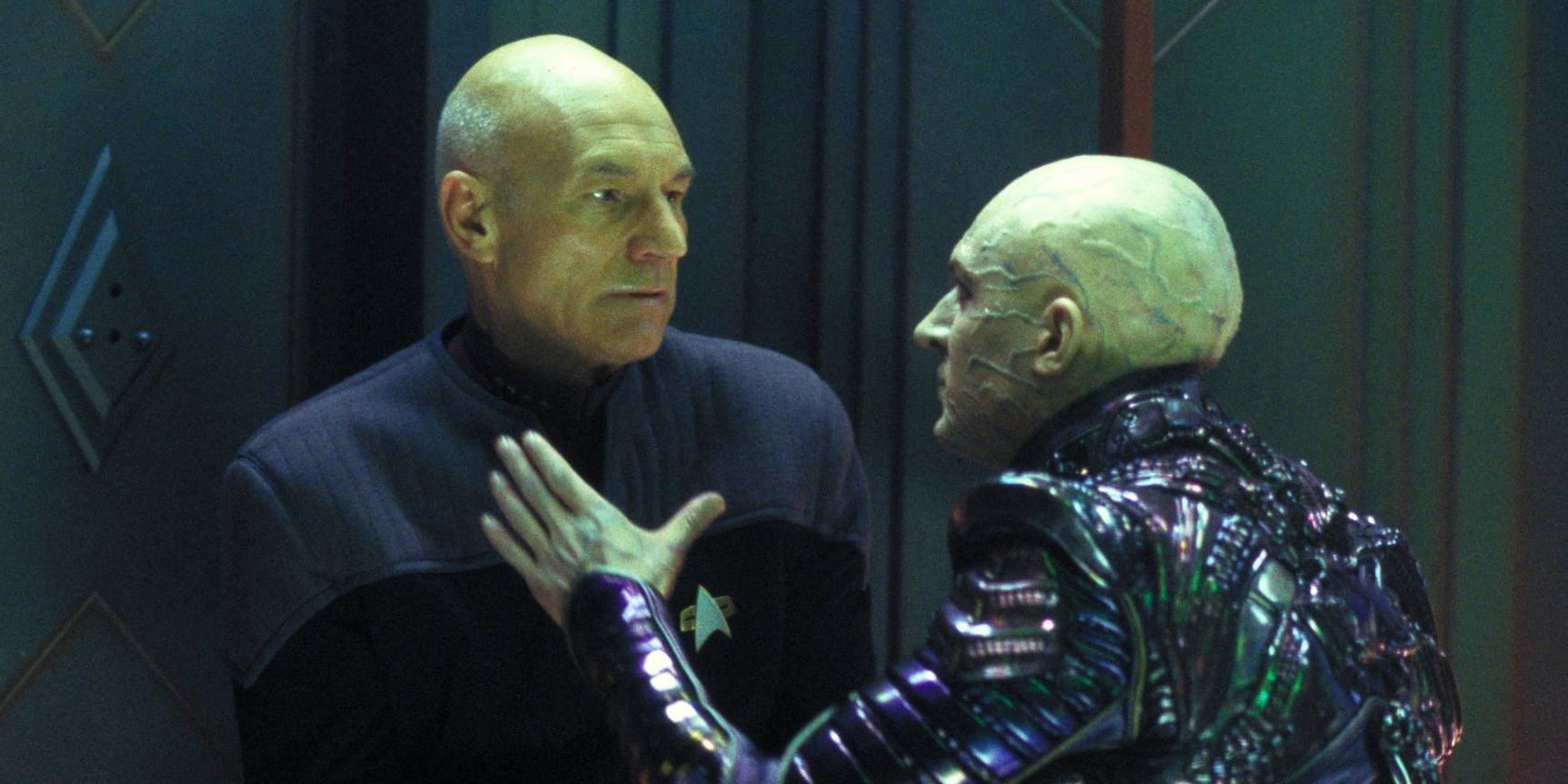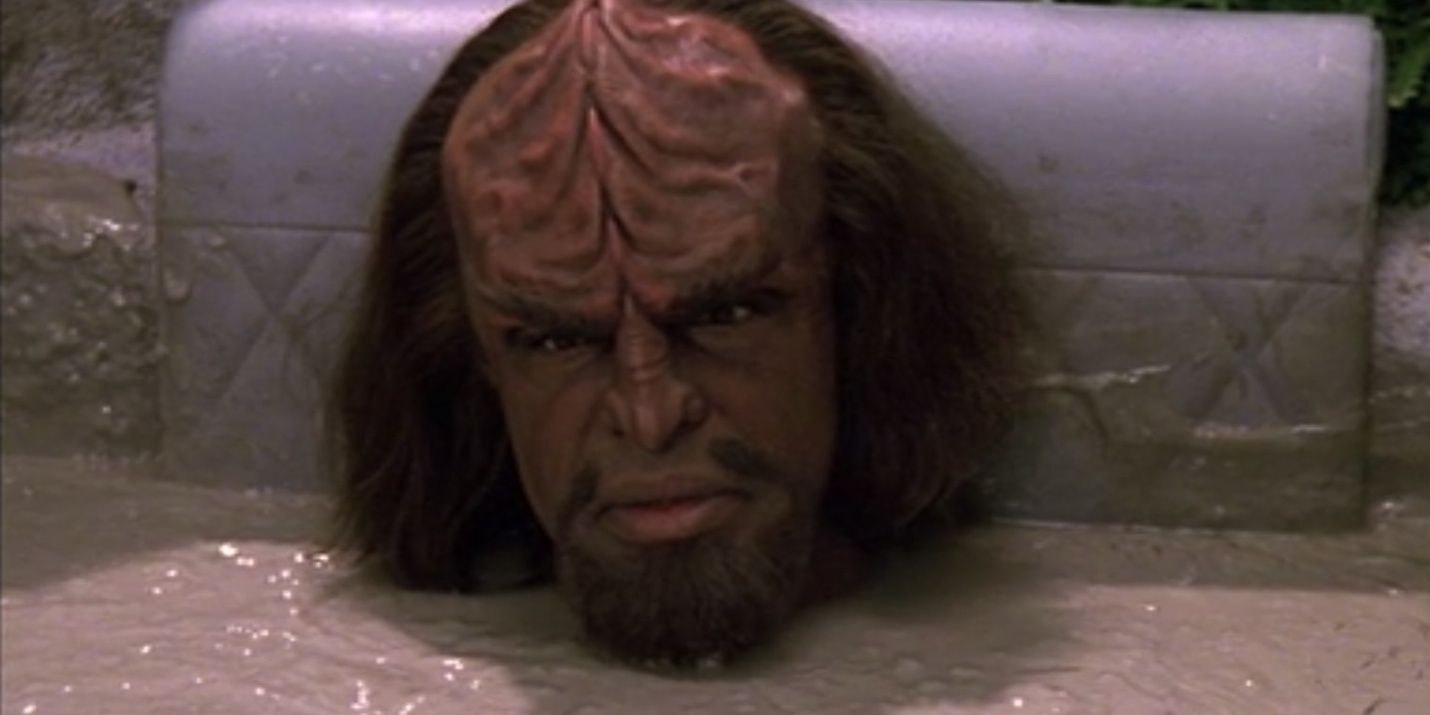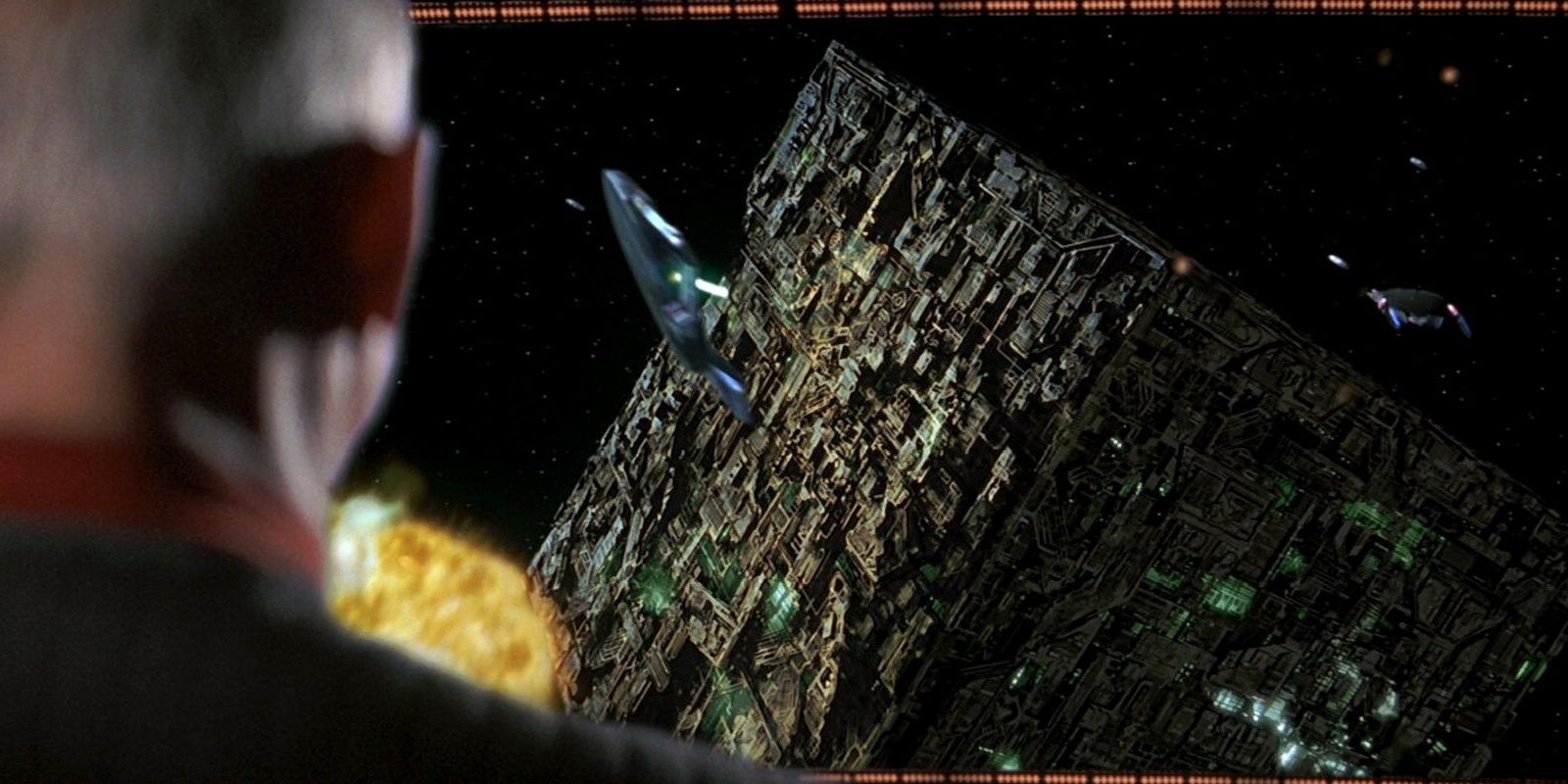With over 170 episodes, Star Trek: The Next Generation has a lot of moments that can be unclear at first but make sense with a closer look. With characters dying and resurrecting, time travel, other dimensions, and countless other strange situations it’s no surprise people see false plot holes.
TNG had well over 100 writers and 28 directors through the seven years it aired. This is already a recipe for plot holes without factoring in Gene Rodenberry's stubbornness during TNG's production. While there are plenty of real plot holes, production realities often bear false plot holes as well.
Tasha Yar’s Death
In "Skin of Evil" one of the major characters of the first season dies, Security Chief Tasha Yar. Many consider this to be a minor plothole, due to the abrupt and unexpected way she was killed. Audiences certainly didn't see it coming the first time watching, and the writers decided to change her story many times. While there's a plothole in "Unification," where we find out she was kidnapped by Romulans in the past, her initial death isn't one. Not only does it make sense in the episode but it also added dramatic weight to an otherwise forgettable episode.
Encounter At Farpoint
The pilot of TNG got the show off to a rocky start. Although it introduced the popular character of Q, “Encounter at Farpoint” has two unrelated stories going on. First Q puts the Enterprise on trial for all crimes committed by humans in the past and later the creatures are imprisoned at Farpoint Station. This looks like a plot hole since there's nothing that ties the two crises together, except for the Enterprise. It's certainly true that both the stories weren't fleshed out enough. However, there's no plot hole because each story has a clear beginning, middle, and end with a logical resolution.
Worf's Klingon Heritage
Anyone who has seen TNG knows that Lt. Worf is all Klingon all the time. That makes a small moment from the first season seem strange. In "Hide and 'Q'" Commander Riker is given powers by Q, and Riker decides to grant his friends their deepest wishes. For Worf, he manifests a Klingon woman but Worf rejects her shouting, "No, she is from a world now alien to me... I have no place for it in my life now."
This seems to be a plothole looking at Worf in later seasons, where he is all Klingon all the time. But the events leading him back into Klingon culture were clear, he discovers his father isn't the traitor to the Klingon Empire and his brother is alive in the episode "Sins of the Father." Worf finding his brother would certainly change his feelings toward other Klingon.
Guinan & Picard
From the beginning they established that Guinan had mysterious origins and knowledge, she can even tell when reality changes in "Yesterday's Enterprise." At first, her backstory appears to have a significant plot hole. Guinan claims she first met Captain Picard when she came aboard the Enterprise. However in "Time's Arrow part 1 & 2" we learn Guinan met Picard in 19th century San Francisco, when Guinan was friends with Mark Twain.
This isn't a plot hole because Guinan's character is sensitive to changes in time and telling them about this could change the past. It's no coincidence that keeping historic events in place is the first rule of time travel. Guinan was using her wisdom to keep time intact.
Wesley The Child Prodigy
In the series the last time we see Wesley Crusher is in "Journey's End," where he leaves with an alien called The Traveler to explore the Universe. This makes him showing up, wearing a Starfleet uniform, in Star Trek: Nemesis seem like an obvious plothole. From the first episode, Wesley was shown to be a child genius who could solve problems the trained officers struggled with. While he did technically fail the Academy entrance exam the first try, in "Coming of Age," that's only because he helped a competitor. With The Traveler, Wesley was thrust into a world where he wasn't always the smartest person. After years of seeing the Universe, it's logical for him to want to return to a place where he felt special, this is a problem for real child prodigies.
Counselor Troi's Powers
Counselor Troi is not just the ship's counselor but she's also an empath that helps advise Captain Picard on the intentions of unknown people or aliens. In the pilot, though, we see her telepathically communicate with Commander Riker. Despite looking like a contradiction we do see her use telepathy later in the series with her mother. Her mother is full Betazoid so she has telepathy with anyone she wants, but Troi is half-human.
Troi and Riker are Imzadi, a Betazoid word to describe a powerful love that will always be there. Their close love and connection from the past would easily increase the connection with Riker through her powers. Troi's emotional connection is tied directly to her empathic powers.
All Good Things
The series finale was another time travel episode, so plot holes run in the territory. Captain Picard's consciousness is jumping between three time periods: in the correct time as the seasoned Captain of the Enterprise, when he first took command and retired to his vineyard. Q reveals himself to be the cause of the time jumps as Picard tries to solve an anomaly growing in the past.
While the future Picard causing the anomaly that threatened all life in the universe is certainly a plot hole, there's another false plot hole. It's said the Pasteur conducting the scan that caused the anomaly in the future is a plot hole because it's not the Enterprise. What caused the anomaly was the scan and Picard's presence, not the specific ship the scan came from.
Nemesis & Shinzon's Head
The final TNG movie, Star Trek: Nemesis, saw Picard and the Enterprise pitted against a secret Reman fleet lead by a clone of Picard, played by a young Tom Hardy. Shinzon has a completely bald head. The problem with this is Picard does have some hair in the show. Then in the episode "Rascals" he is transformed into a child and has a full head of hair. We see young Picard with hair again in "Tapestry." Looking at Picard it's natural to think Shinzon should have hair, but Shinzon isn't Picard. Shinzon was raised with the sole purpose of replacing Picard as a Romulan agent. It's only natural Shinzon would want to look like Picard.
Worf's Failed Political Career
Worf accepts a position as Ambassador to the Klingon Empire for the Federation, in the Deep Space Nine finale "What We Leave Behind". This is after the first three TNG movies so it was assumed Worf ended his career as an Ambassador. When Star Trek: Nemesis came out Worf was back on the Enterprise with all his friends.
This can be considered a plot hole, but it's also perfectly in Worf's character. Worf is a warrior, not a politician. His interactions in Klingon politics in the show were always brief and he was reluctant when accepting the position.
The Borg's First Contact Plan
Star Trek: First Contact pits the Enterprise crew against the Borg. The Borg send a cube to Earth where it meets a fleet of Starfleet ships, when the Borg cube starts to suffer critical damage it launches a small sphere craft that opens a hole in time. The Enterprise makes it through to fight the Borg in the past.
If the Borg's original plan was to assimilate Earth in the past then it's silly for them to fight the Federation first, instead of time traveling and going to Earth then. In "The Best of Both Worlds" we learn that the Borg like to assimilate races and their technology, their initial goal was to get their advanced technology.

